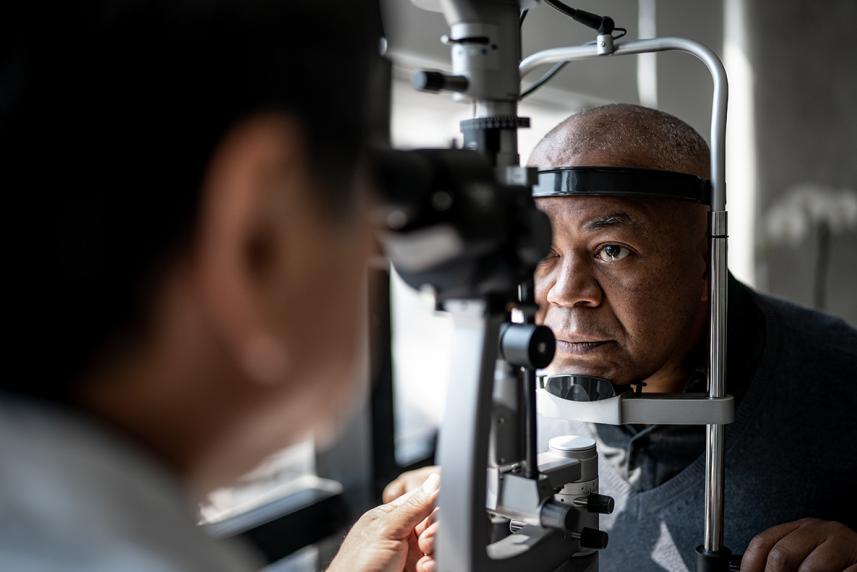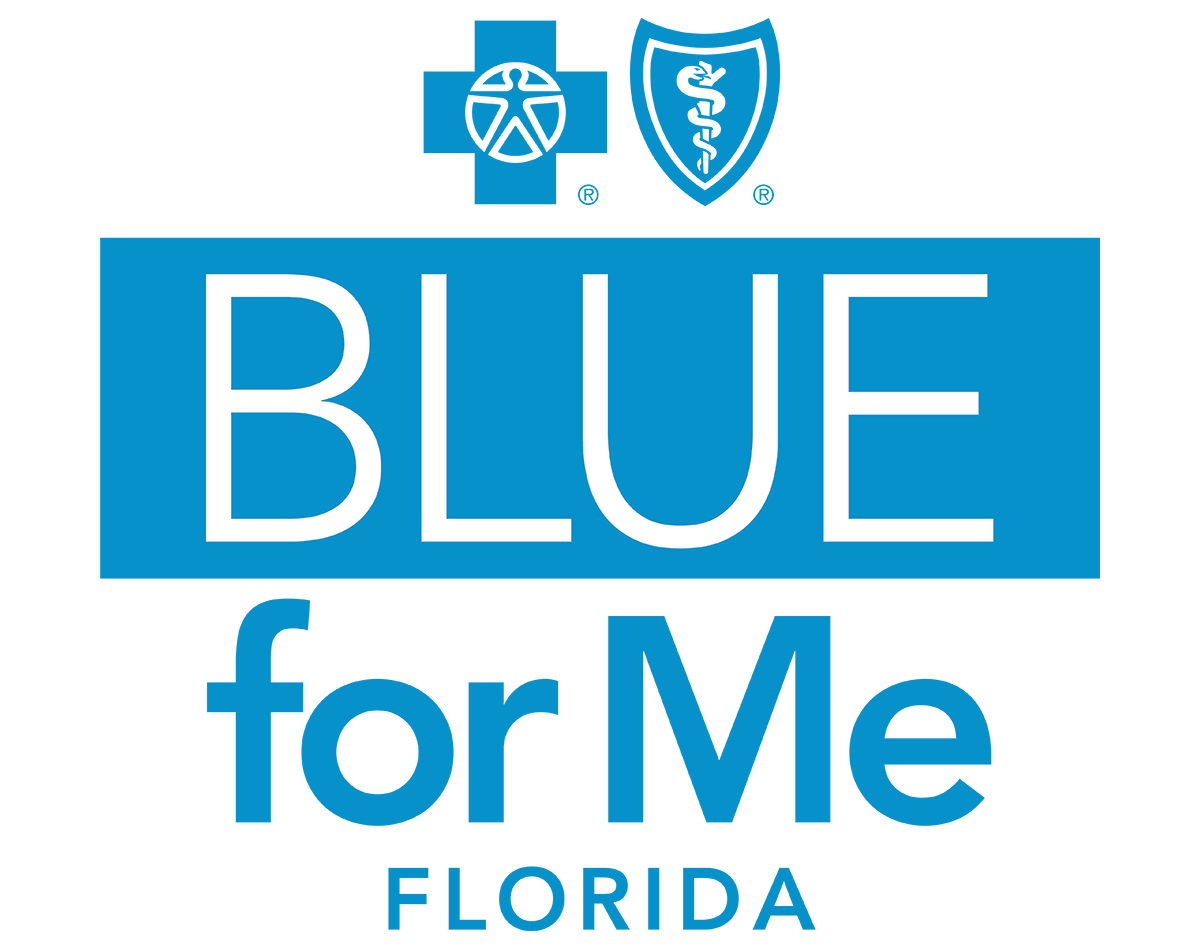How to Protect Your Eyes if You Have Diabetes
Diabetes and vision loss often go hand in hand. Booking this simple appointment is the easiest way to save your sight.

If you’ve recently been diagnosed with diabetes — or even if you’ve known for a while — you might be surprised to learn that people with diabetes are more likely to develop eye complications. “Many people don’t realize it, but diabetes affects the whole body, including the eyes,” says Michael Bryan, M.D. Dr. Bryan is an endocrinologist in Washington, D.C.
This is because persistently high blood glucose can damage your eyes. It can lead to conditions such as:
- Blurred vision
- Cataracts
- Glaucoma
- Diabetic macular edema
- Diabetic retinopathy
Some eye problems are easy to treat if detected early. But others can cause vision loss — even when there are no symptoms. The good news is that you can help keep your eyes healthy by having an annual dilated eye exam. Here are 3 reasons that it’s important to get your eyes checked regularly.
1. Diabetic Retinopathy Is Diagnosed by a Comprehensive Eye Exam
Retinopathy is damage to the blood vessels in the retina. This is a layer in the back of the eye that helps you process light properly. “The damage to the [retina’s] blood vessels is due to the elevated levels of blood sugar,” Dr. Bryan says.
Between 40% and 45% of Americans diagnosed with diabetes have some stage of retinopathy. The longer you have diabetes, and the less control you have over your blood sugar levels, the more likely you are to develop the condition. In the early stages, there are often no symptoms or only mild ones. If left untreated, the vessels build up fluid in the eye. This can cause diabetic macular edema, which can lead to vision loss or even blindness.
That’s why it’s so important to have a dilated eye exam every year if you have diabetes. Early detection and treatment can lower your risk of severe diabetic-related vision loss by 95%.
2. You Have a 50% Higher Chance of Developing Glaucoma
People with diabetes are at risk of a specific type of glaucoma. It’s called neovascular glaucoma, a severe and rare form that’s often associated with diabetes.
Glaucoma starts with a buildup of fluid in the front of the eye. Diabetes can contribute to that fluid buildup. Here’s how: High blood sugar levels damage blood vessels in the eyes. That causes new, abnormal blood vessels to grow. When they grow on the iris — the colored part of the eye — it blocks the normal flow of fluid out of the eye. The high pressure of the fluid damages the eye’s optic nerve. Ultimately, it can result in vision loss.
Most people aren’t aware they have the condition until they lose some peripheral vision. (That’s the ability to see out of the corner of your eyes.) Even then, the change in vision may be so small that people don’t seek medical help until permanent damage has occurred. Regular eye exams can help catch glaucoma early.
If you need additional support and resources to take control of your diabetes, BlueForMe has your back. You can access diabetes and stress-management programs through your health plan on the app. Call 844-730-2583 to see if you’re eligible for BlueForMe today.
3. Cataract Risk Is Twice as High with Diabetes
A cataract forms when the lens of an eye becomes cloudy. Although cataracts are more common in older adults, Dr. Bryan has seen them in patients in their 20s. “With diabetes, you’re getting a constant change and fluctuation of the lens because of the drawing of fluid in and out of the lens due to high blood sugars,” he says.
Once a cataract is there, it may grow. Vision may become duller or blurrier, until surgery is needed. Testing for cataracts can potentially catch signs of them early, when it’s easier to slow down their progress or improve symptoms.
For help scheduling your next eye exam, use your BlueForMe digital management app. This smartphone app is included with your health plan. You can use it to connect with your care team to find an in-network provider and book an appointment. Call 844-730-2583 to see if you’re eligible for BlueForMe today.
6 Steps to Help Prevent Diabetic Eye Diseases
In addition to having an annual eye exam, Don Bryan, O.D., offers more ways to protect your eyesight. Dr. Bryan is an optometrist at Innovative Vision and Wellness in Davie, Florida.
1. Control your blood sugar. This is the No. 1 thing you need to do if you have diabetes. High blood sugar over time raises the risk of eye problems.
2. Maintain healthy blood pressure and cholesterol levels. High blood pressure and cholesterol levels can also increase your risk of eye diseases. Your primary care physician can help you keep an eye on your levels during your regular physicals. Be sure to schedule a physical each year.
3. Take your medications consistently. Always take the full dose that your physician prescribes. If you have questions or concerns, talk to your doctor. They can help with things such as side effects or high costs.
4. Stay active. Regular exercise is important. It can have a big impact on blood glucose levels. As always, talk with your doctor before starting a new workout routine. They can help guide you on what kind of exercise and how much is right for you.
5. Watch what you eat. Eating the right diet is the best way to take control of your diabetes. Need help with carb counting, understanding food labels, or meal planning? Your diabetes care team can help — you can connect with them on your BlueForMe app.
6. Refrain from smoking. Smoking increases your risk of eye problems such as macular degeneration, cataracts, and diabetic retinopathy. The chemicals in cigarette smoke can damage the eyes. Smoking can also harm the blood vessels in the retina and cause inflammation in the eyes. And it could make managing diabetes more difficult. That’s partly because the nicotine in cigarettes may make the body more resistant to insulin. That can cause blood sugar levels to rise. For help quitting, join a smoking cessation program through the BlueForMe app.
Ready to kick (cigarette) butts? BlueForMe can help you take the next steps. The app includes a smoking cessation program as part of your health plan. Call 844-730-2583 to see if you’re eligible for BlueForMe today.
[Sources:]
[1] “Stay on Track to Prevent Blindness from Diabetes.” National Eye Health Education Program, National Institutes of Health, https://www.nei.nih.gov/sites/default/files/2019-06/Stay-on-TRACK-To-Prevent-Blindness-From-Diabetes.pdf. Accessed December 29, 2021.
[2] “Vision Loss, Blindness, and Smoking.” Centers for Disease Control and Prevention, February 15, 2021, https://www.cdc.gov/tobacco/campaign/tips/diseases/vision-loss-blindness.html. Accessed December 29, 2021.
[3] “Cigarette Smoking: A Risk Factor for Type 2 Diabetes.” U.S. Food and Drug Administration, May 4, 2020, https://www.fda.gov/tobacco-products/health-effects-tobacco-use/cigarette-smoking-risk-factor-type-2-diabetes. Accessed December 29, 2021.
DISCLAIMER: Florida Blue has entered into an arrangement with Wellframe to provide members with care decision support services, information and other services. This article is provided by Linkwell Health through their arrangement with Wellframe. Please remember that all decisions that require or pertain to independent professional medical/clinical judgment or training, or the need for medical services, are solely your responsibility and the responsibility of your physicians and other healthcare providers. Wellframe is an independent company that provides online services to Florida Blue members through the Blue for Me app.
